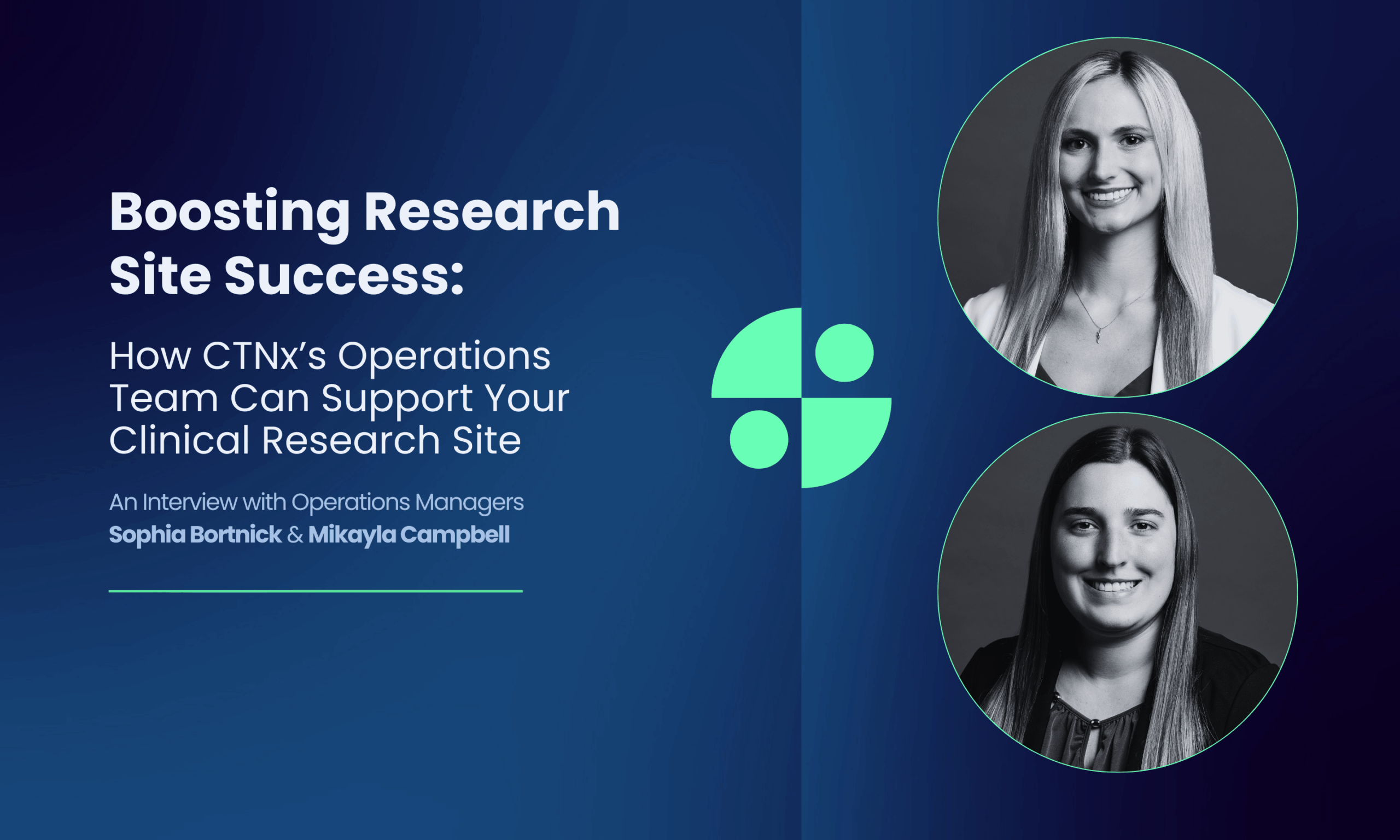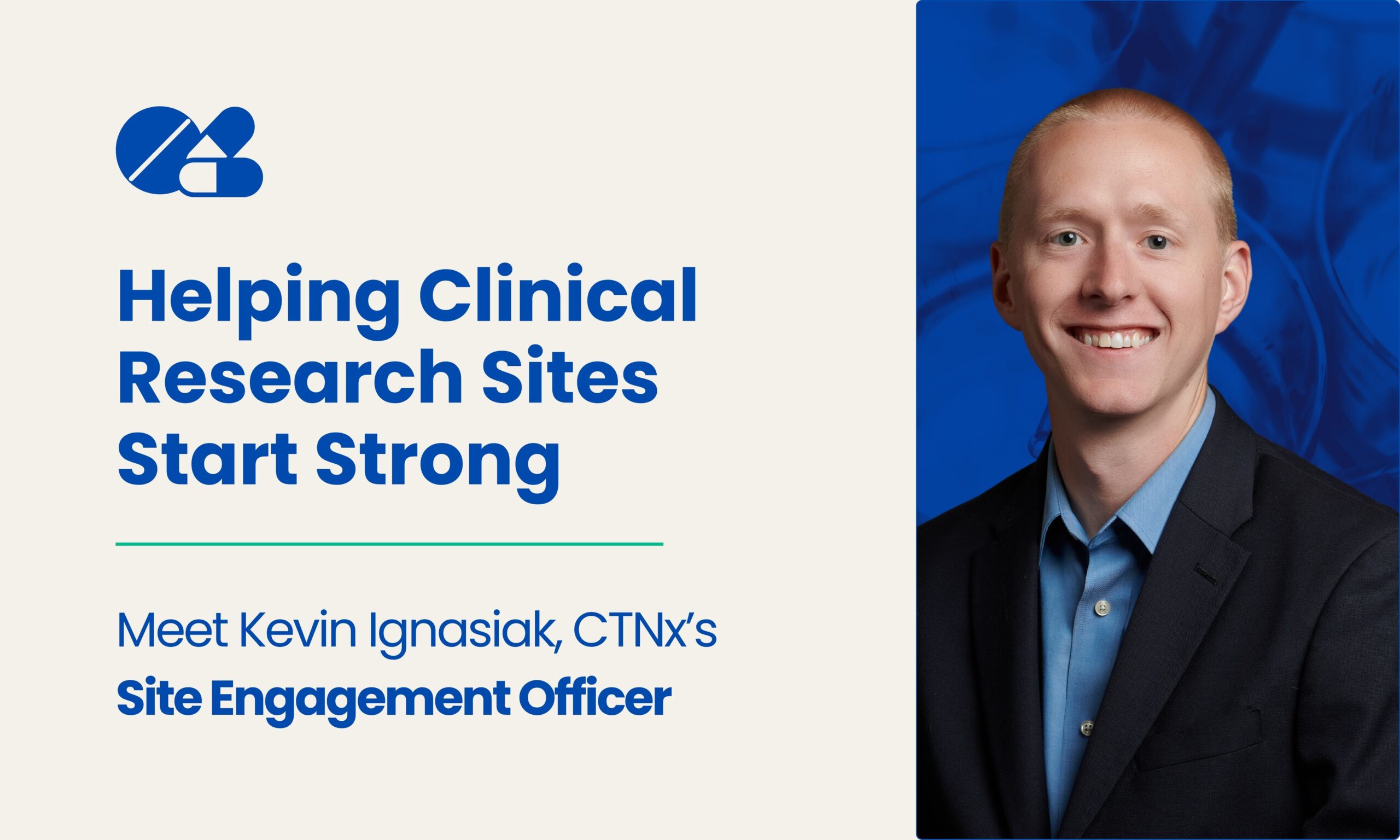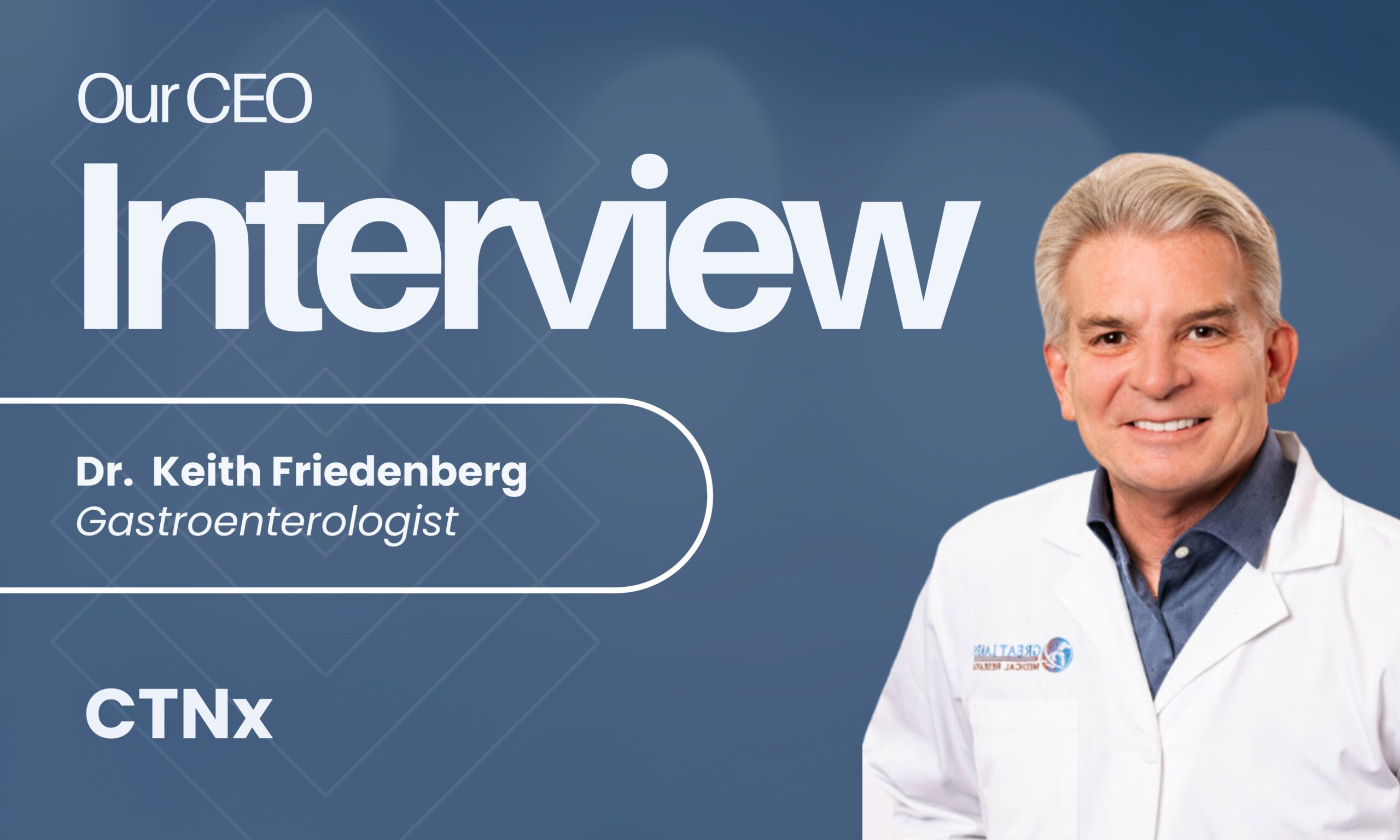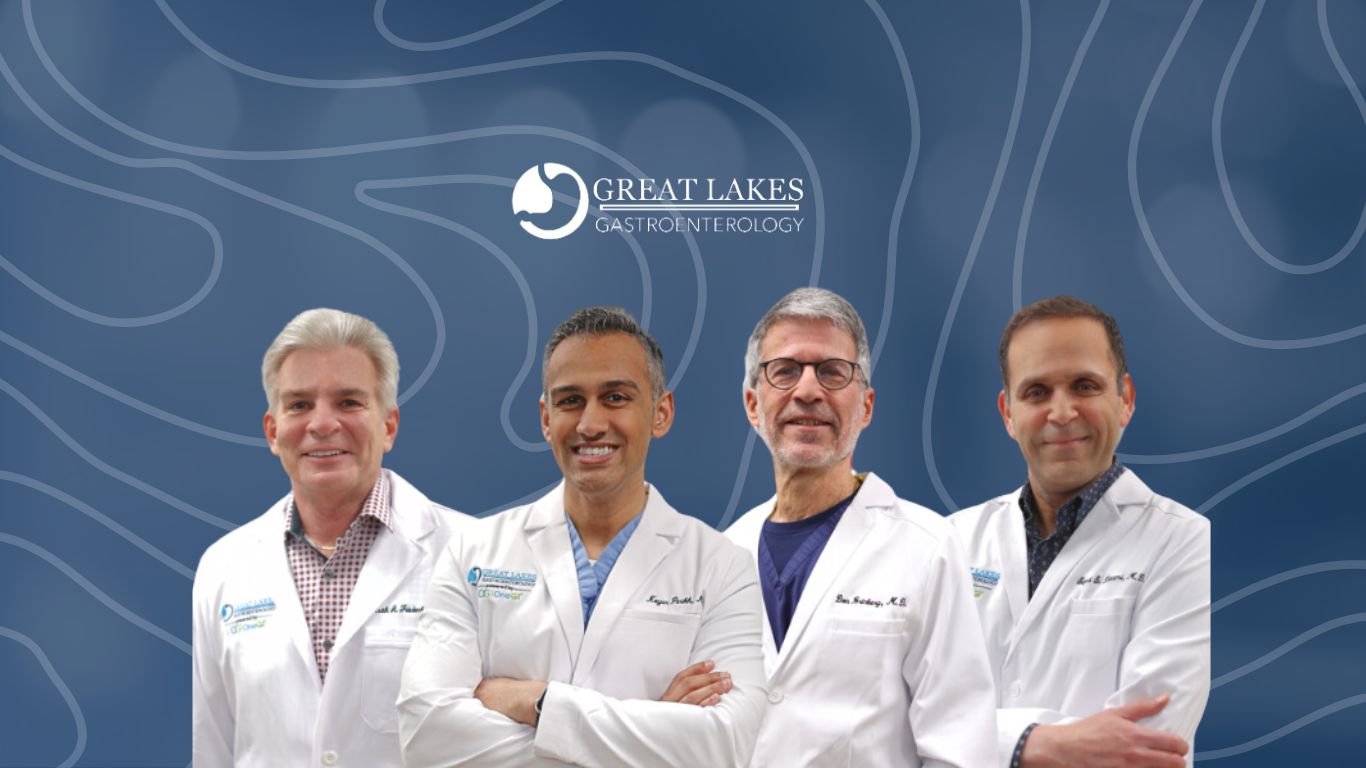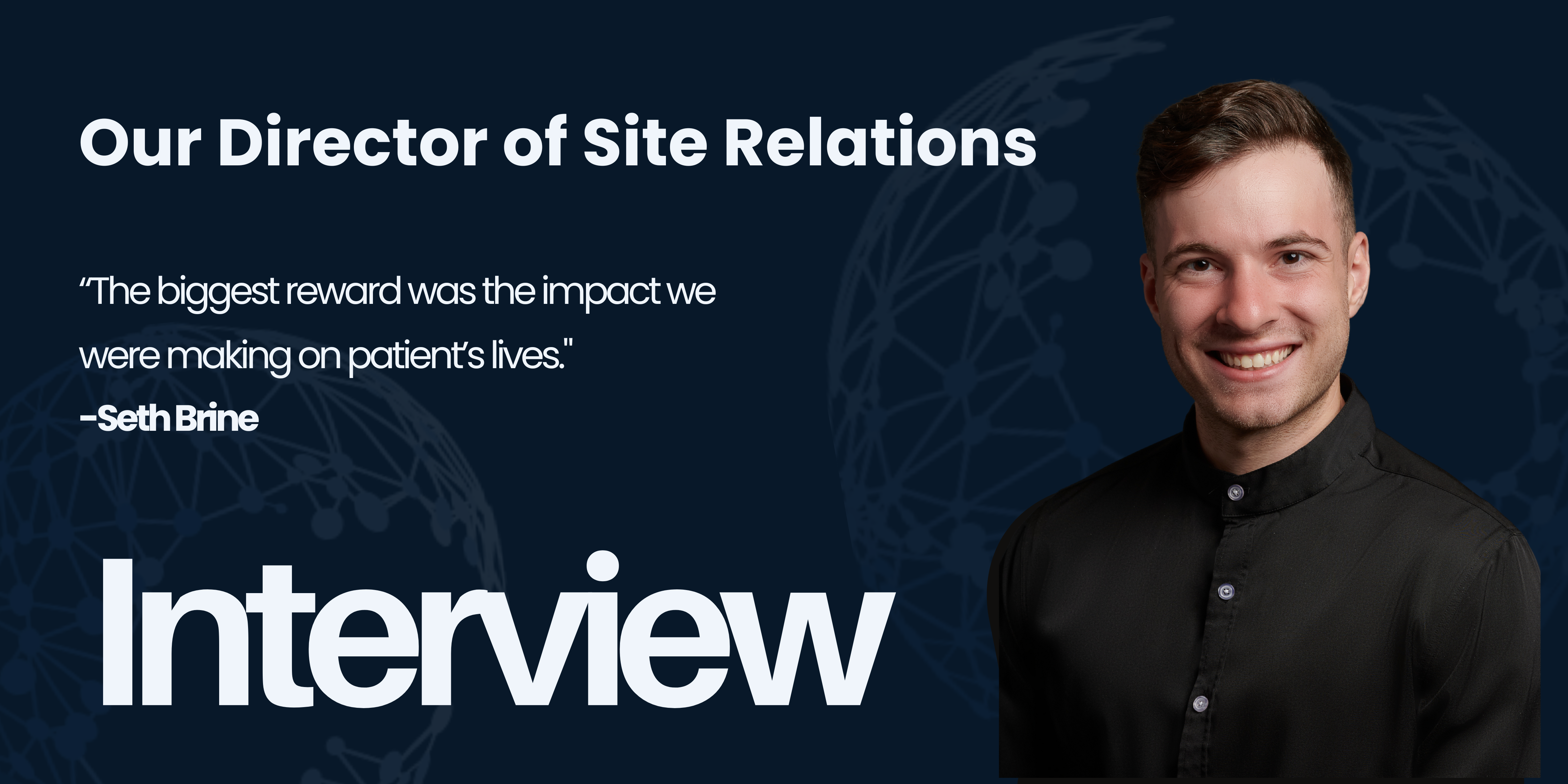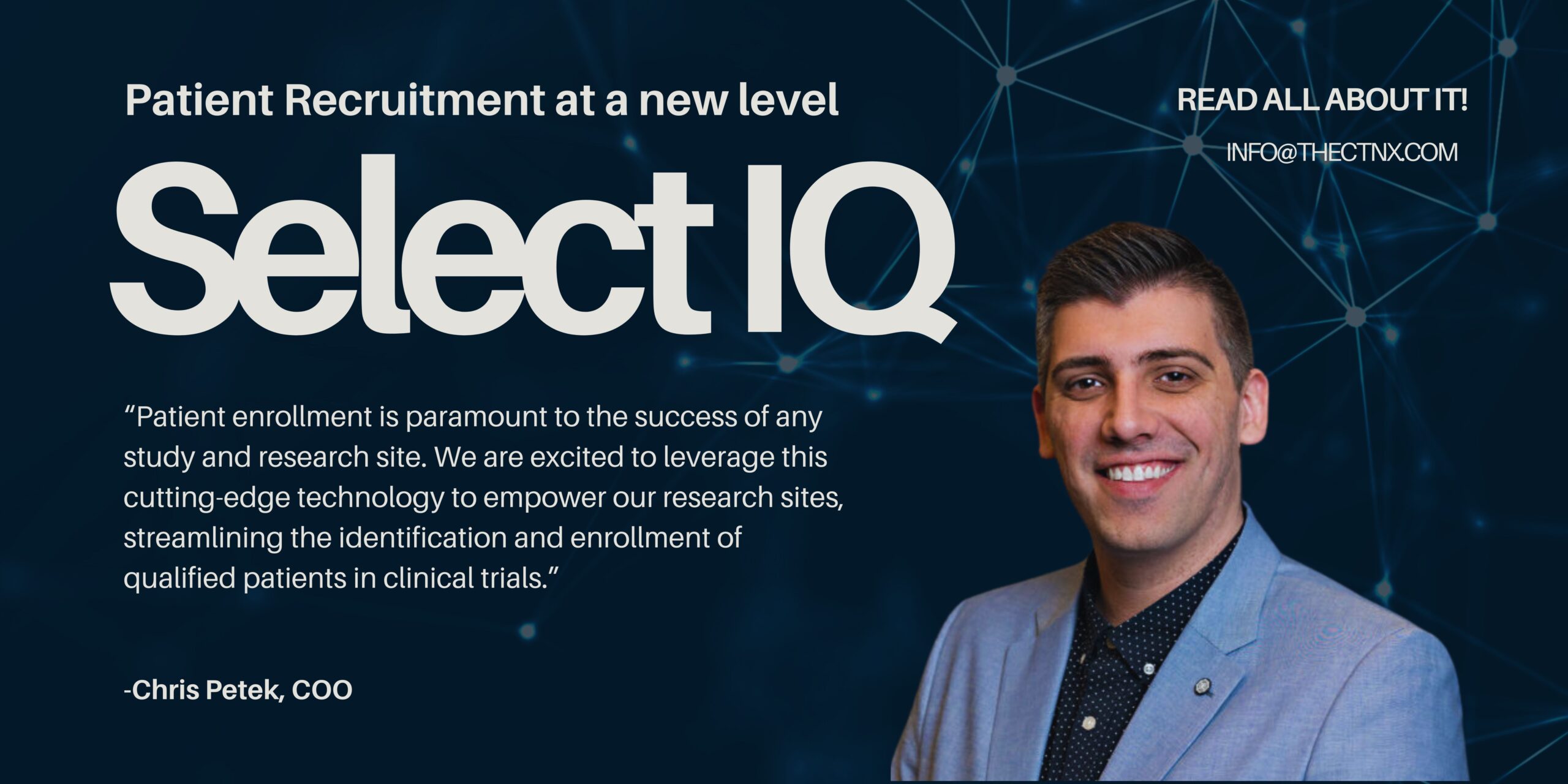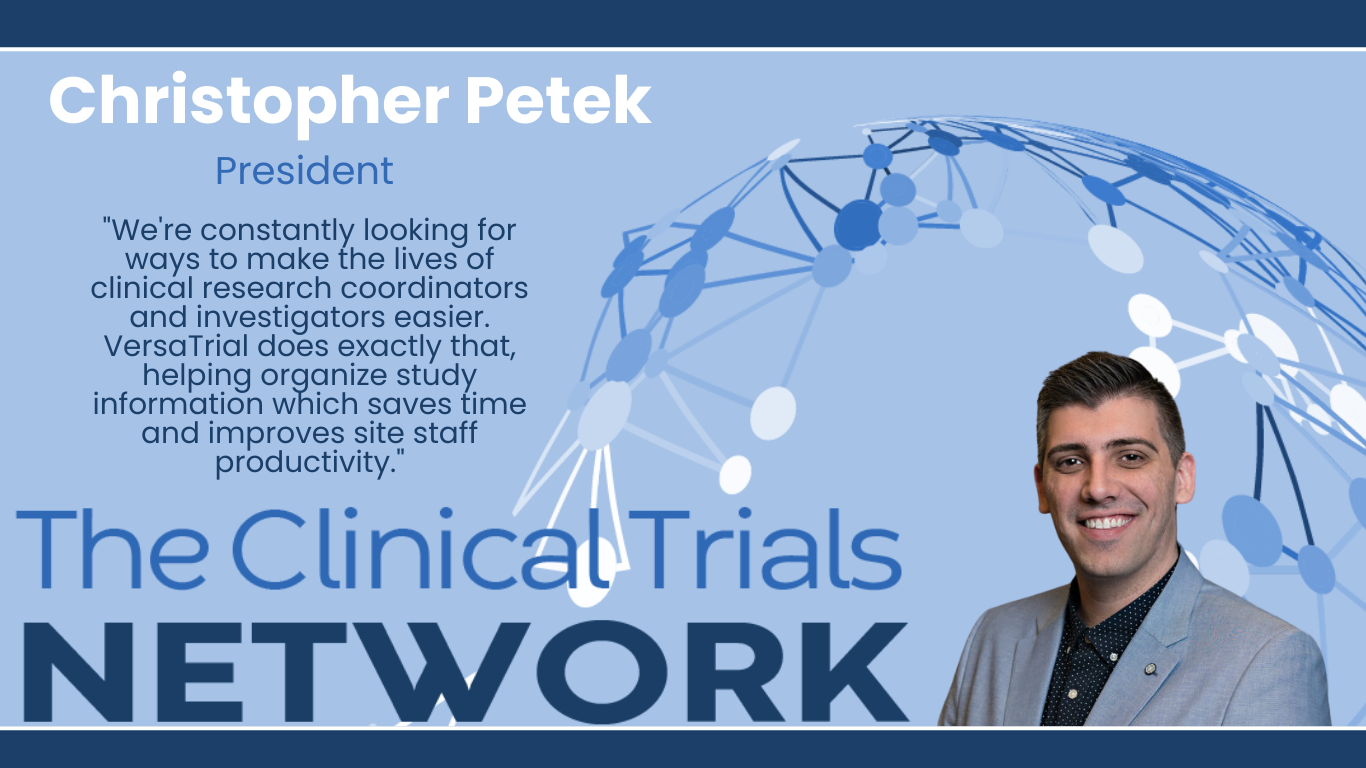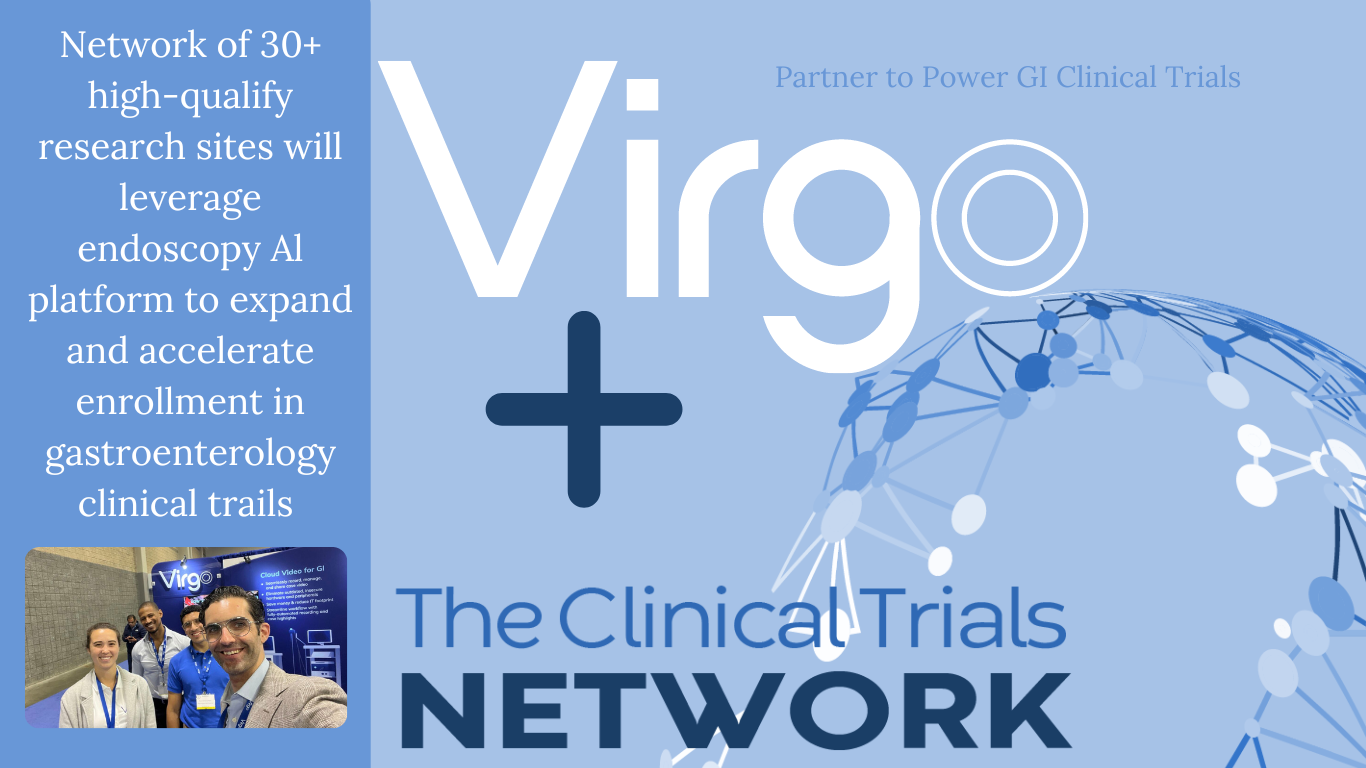Q: Can you tell us a little bit about CTNx’s Operations Team and your primary objective?
Mikayla: Absolutely. The Operations Team at CTNx serves as the daily support system for our research sites. We are a consistent point of contact that Investigators and Coordinators can rely on throughout the day—whether they have protocol-specific questions, need help navigating study logistics, or simply want a sounding board.
Many sites that have come to us with prior research experience have shared that they often felt isolated and experienced delays when trying to get answers directly from sponsors. With CTNx, every site is paired with a dedicated Operations Specialist who is familiar with the protocol and available to provide timely support.
Sophia: Beyond being responsive, our team also takes on a significant portion of the clerical and administrative work—freeing up our sites to focus on what matters most: patient care and clinical execution. Removing this from the site’s workload allows them to see more patients which translates to higher enrollment, and ultimately increased revenue for their research program.
Q: How do you help sites prepare as they take on a new study?
Mikayla:
We play a hands-on role in helping our sites prepare for new studies, starting with a detailed review of the protocol and regulatory requirements. We walk through everything with them, because truly understanding what’s expected is essential to a successful launch. Our goal is to ensure each site is aligned with the protocol and all relevant guidelines from day one.
Sophia:
We also build out the study framework within our Clinical Trial Management System (CTMS), also known as the eSource. This includes mapping out the sequence of study activities and defining the specific data points that need to be captured at each patient visit.
The eSource presents this information in a clear, digestible format, allowing Coordinators to easily read, understand, and comprehend what’s required. It includes protocol-specified instructions and guidelines to help sites prepare thoroughly and ensure that all procedures are in place and ready to go on the day of the visit.
This structured approach makes it easy for Investigators and Research Coordinators to know exactly what tasks need to be completed and what data must be collected for every visit. Without this level of support, sites would have to map things out on their own — which could lead to confusion, disorganization, and compliance risks.
Q: How do you help avoid compliance risks?
Mikayla: A major part of our role is focused on data oversight. We oversee the entered data and source documentation, ensuring everything remains clean, accurate, and aligned with the protocol within the Clinical Trial Management System (CTMS). Minor mistakes can sometimes slip through when source documents are first submitted to us, but our proactive approach allows us to catch and correct those issues before they become larger compliance problems.
Sophia: Essentially, we serve as the primary link between research sites and Sponsors, and ensure strong data management which is critical to a site’s overall success. By maintaining thorough documentation, we also ensure that sites are audit-ready and can provide clear proof of compliance if they were ever to undergo a Sponsor or FDA audit.
Q: Can you share more about how you help free up your sites’ time?
Mikayla: One of the most valuable ways we support our sites is by handling data transcription. During each visit, the Research Coordinator collects important data from the patient, which needs to be entered into two systems: the Clinical Trial Management Software (CTMS) and the sponsor’s Electronic Data Capture (EDC) system.
When a site partners with CTNx, the Coordinator only needs to enter the data once—into our Clinical Trial Management System (CTMS). From there, our team reviews the data for accuracy and compliance (often catching issues early) and then transcribes it into the sponsor’s EDC. This removes a significant administrative burden from the Coordinator’s workload. In fact, several experienced Coordinators who previously had to enter data into both systems have told us CTNx’s data transcription saves them around 1.5 to 2 days per week. That time savings allows them to focus on patient care—ultimately enabling the site to see more patients and generate more research revenue.
Sophia: Another thing on this front that we help with is query resolution. These are follow-up questions that come from the study monitor about study data that has been entered. Because we manage the data transcription process, the number of queries is often cut in half from the start. And when queries do come through, we’re able to resolve about 60% of them without needing to bother the Coordinator or Principal Investigator.
Q: In your opinion, what makes the most successful research sites?
Mikayla: That’s an easy one—strong communication. Our most successful sites consistently keep us in the loop and are responsive. Sites that struggle with communication often face unnecessary delays and have a much harder time achieving success.
At CTNx, we’re a valuable resource for our Research Coordinators and PIs. We provide answers, guidance, and support so that issues can be resolved quickly—often before they need to be escalated to a monitor or sponsor. We also create a safe space where no question is too small or off-limits. Clear, open communication helps everything run more smoothly.
Sophia: To add to what Mikayla shared, we also hold bi-weekly meetings with our Principal Investigators and Coordinators. These calls are efficient—PIs often only need to join for about 15 minutes—but their participation is important. It ensures everyone stays aligned, engaged, and aware of their responsibilities. We already take a large portion of the workload off their plate, so spending that time with us helps deepen their engagement and ownership of the research process.
During these calls, we address and resolve any open issues, reorder supplies, and prepare for upcoming patient visits. It’s one more way we help keep sites proactive, not reactive—and that makes all the difference.
Q: Mikayla, can you share 1-2 success stories from the sites you support?
Multispecialty Site in CA
When I first started working with one of our sites in California, they were really struggling. Documentation was inconsistent, enrollment was low, and communication with the team was poor. Honestly, we weren’t sure they would succeed with their research program. But I had high hopes and believed I could help turn things around. After going on-site and working closely with the team, we saw major improvements. They started enrolling consistently, communication picked up, and they learned how to properly document data and subject information. Today, they’re the top enroller for a pretty large study — a huge turnaround, and I’m really proud of the progress they’ve made.
GI & Neurology Site in SC
One of our sites in South Carolina was another site facing multiple challenges. They were behind on documentation and enrollment, and the PI was worried about finances. I stepped in, provided additional training, visited on-site, and had a candid conversation with the PI and Coordinator about expectations and what needed to change. As a result, they decided to hire an experienced Research Coordinator, which made an immediate impact. Since then, they’ve been enrolling in both specialties — GI and Neuro — and communication and documentation have improved significantly. They now manage over 12 active studies and are even looking to hire a third Coordinator to keep up with growth. It’s been an amazing transformation.
Q: Sophia, can you please share 1-2 success stories from the sites you support?
Dermatology Site in WY
At one site in Wyoming, we had a temperature excursion that could’ve resulted in the investigational product being unusable. I jumped in and within five days, I got everything back on track — handling the temperature logs, documentation, filling out forms, and completing the sponsor’s reports. Because we caught the issue early, the IP stayed suitable for use. That saved the site more than three days of extra work for the Research Coordinator and prevented the destruction of the product. It also meant no patient visits had to be canceled, and no extra IRB reporting was needed. Catching it early really kept the study running smoothly.”
Gastroenterology Site in OH
We had another site in which the sponsor had flagged over 300 protocol deviations that hadn’t been entered throughout the study. I took responsibility and entered all the deviations across three different systems in just one week. This gave the Research Coordinator a week of their time back in which they could focus patient visits and enrollment without delay. It was a huge relief for the site, and it helped keep the study moving forward.
Gastroenterology Site in FL
This site was really struggling — they had a new Coordinator every month, lots of protocol deviations, and many screen failures. I went onsite and trained the team, worked closely with site management to create a strong workflow, and tackled operational challenges like organizing visits, fixing fridge and freezer issues, and cleaning up the research space. Now, the site has two long-term Coordinators, five active studies with four more coming up, and a sister location ready to conduct research. They are now one of our top enrollers for pretty much every study the participate in.
Q: What advice do you have for PIs and Coordinators working with CTNx?
Mikayla’s Advice:
- The right team matters. Having qualified and dedicated staff is essential to conducting successful research and ensuring studies stay on track.
- Clear communication drives success. Stay in regular contact with CRAs, study teams, and CTNx. Strong communication between all parties leads to smoother execution and better outcomes.
- Know your patient population. Make sure your site has access to the right patients for the studies you’re applying for — this helps maximize everyone’s time and increases the chances of enrollment success.
Sophia’s Take:
- Communication is key. We’re here to support you — the more you engage with our team, the better we can guide you in building a successful research program.
- Preparation matters. Before seeing real patients, take time to prepare for visits, ask questions, and run through test scenarios. It makes a big difference.
- Training and onboarding can feel overwhelming at first, but they’re designed to lay the foundation for your long-term success with CTNx.
Big Shoutout to Sophia and Mikayla for breaking it down! Thanks for sharing your insights on how CTNx supports its research sites and what it takes to build a successful research program.
